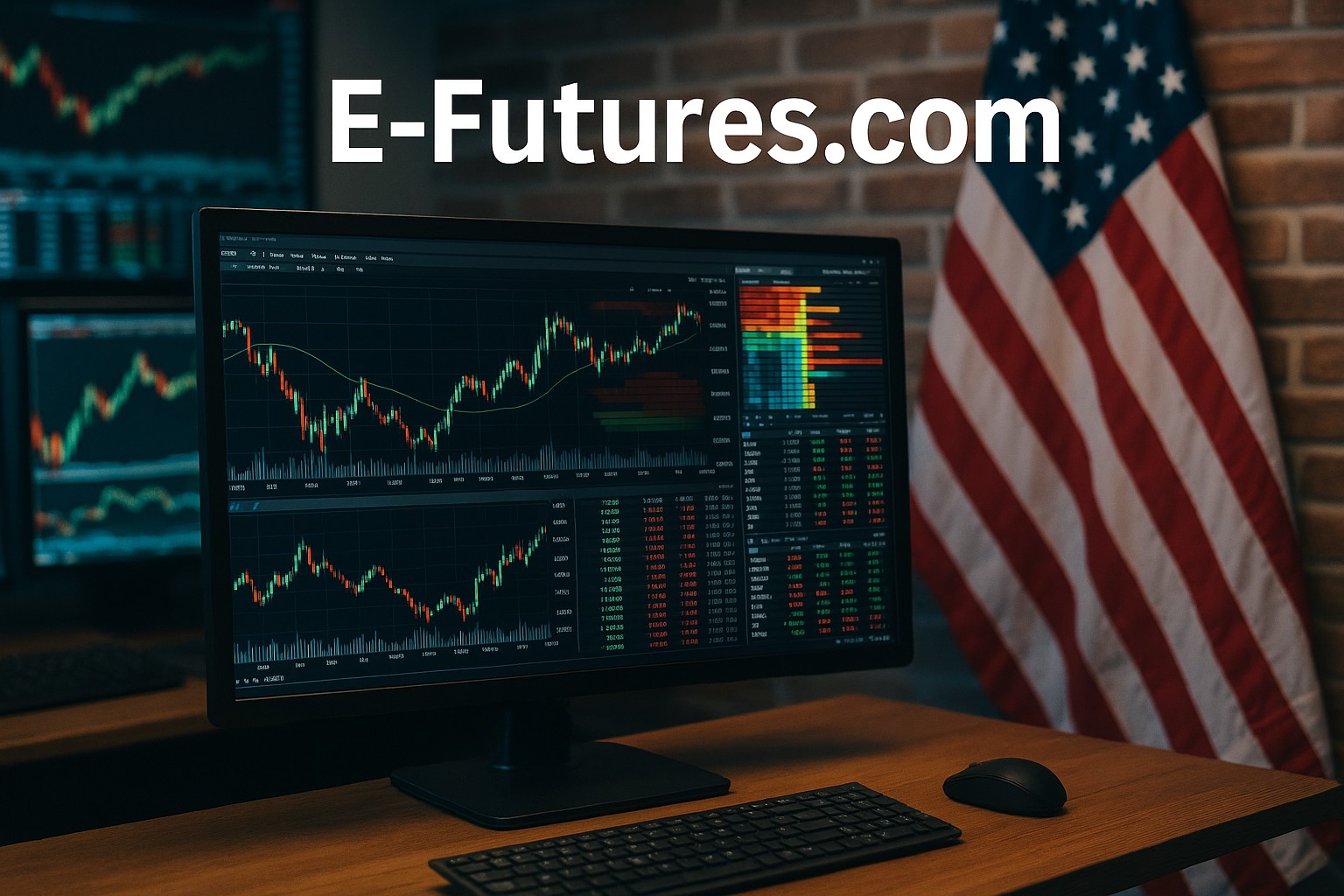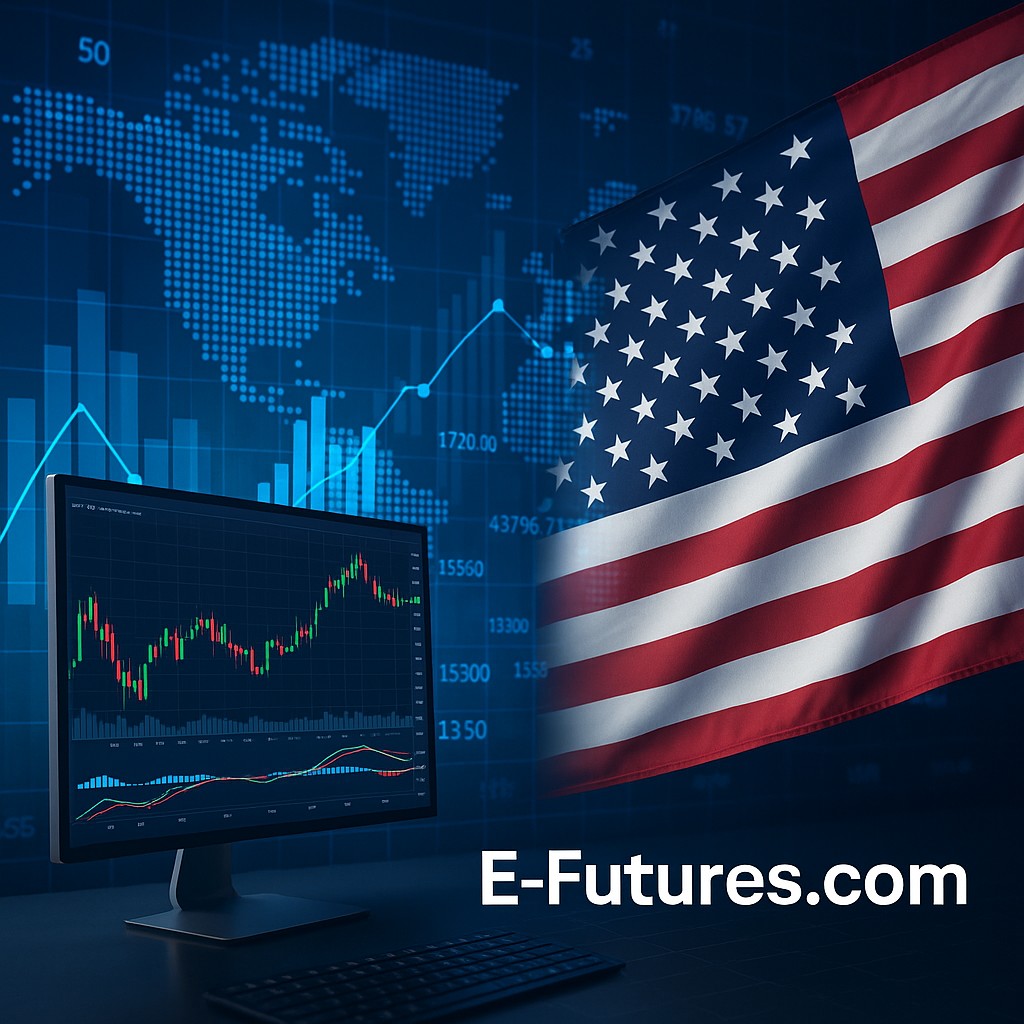
The world of futures trading is fast-moving, highly technical, and intensely competitive. Whether you’re a day trader focused on Micro E-Mini contracts or a professional seeking institutional-grade order routing, one constant remains true: your broker matters.
In 2025, traders are no longer settling for high-commission legacy platforms or brokers that hide behind impersonal customer service. Instead, they’re choosing firms that combine technology, transparency, low-cost trading, and true human support—and E-Futures.com is leading that shift.
This in-depth review will demonstrate why E-Futures.com, operated by Cannon Trading Company, has emerged as a top-tier provider in any futures trading brokerage comparison, and why it should be the first choice for anyone serious about trading futures.
Understanding the Mission Behind E-Futures.com
Unlike faceless fintech apps or multi-asset platforms that treat futures as an afterthought, E-Futures.com is laser-focused on providing an elite-level experience in futures contract trading. Their mission is simple: offer direct access to powerful tools, exceptional support, and ultra-competitive pricing, all while ensuring every client—regardless of size—has access to professional-grade services.
Transparent, Ultra-Low Commissions: Built for Traders
Breaking the Cost Barrier
Commissions can quietly drain a trader’s profitability, especially for high-frequency or intraday strategies. That’s why E-Futures.com puts low costs front and center, with commissions starting at just $0.25 per side. This structure is among the lowest in the industry and beats out virtually every major competitor when measured in a futures trading brokerage comparison.
Unlike other brokers who sneak in added “technology” or “clearing” fees, E-Futures.com offers:
- No platform fees for basic use
- Transparent breakdowns of exchange and NFA fees
- No hidden account maintenance costs
- Volume-based pricing flexibility for active traders
Whether you’re a retail trader testing the waters or a seasoned professional running multiple lots daily, you’ll immediately see the savings stack up.
Real-World Example
A trader placing 20 contracts per day would pay:
- At $0.25/side (E-Futures.com): $10/day
- At $2.25/side (legacy brokers): $90/day
- Annual savings: Over $20,000
Day Trading Margins Designed for Efficiency
Leverage Without the Risk of Overextension
Another standout feature in any futures trading brokerage comparison is how a firm handles margin requirements.
E-Futures.com offers:
- $50 day trading margins on Micro contracts
- Ultra-low margins on E-mini and other major futures contracts
- Full support for exchange-set overnight margining
- Access to cross-margining through FCMs like Ironbeam and Gain Capital
This empowers traders with capital efficiency—essential for those using tight stop-loss strategies or algorithmic systems.
CannonX: The Professional’s Desktop Terminal
CannonX, the flagship desktop platform offered by E-Futures.com, is powered by CQG, one of the most trusted names in institutional-grade market technology.
Key features include:
- Real-time order flow and depth-of-market tools
- Professional-grade charting with multiple timeframes
- Strategy builder and algorithmic automation
- Custom workspaces and hotkeys for speed trading
- Server-side bracket and OCO orders
The CannonX platform has been designed for those who treat futures trading not just as speculation—but as a business.
Customer Support That Actually Supports You
Licensed Brokers, Not Call Center Scripts
Most discount brokers have replaced support desks with bots. Not E-Futures.com.
Every client gains access to Series 3 licensed professionals with deep expertise in:
- Order execution and spread trading
- Platform configuration
- Risk management and compliance
- Custom strategy guidance
Support is available via:
- Live phone during market hours
- Email and chat support
- Personalized training sessions
This is one of the few brokers where you can call and speak to an actual broker—a rare advantage in 2025’s highly automated landscape.
Educational Resources That Empower Traders
Successful futures contract trading requires constant learning, and E-Futures.com delivers:
- Webinars on strategy development, platform tools, and market insights
- Tutorial videos for CannonX
- Articles and blog content covering everything from beginner guides to advanced hedging techniques
- Regular updates on CME changes, contract specs, and regulatory developments
In a strong futures trading brokerage comparison, this dedication to trader education puts E-Futures.com far ahead of commission-only providers who offer little more than a login.
Clearing Relationships and Account Security
Partnered With the Best in the Industry
E-Futures.com is not just a front-end broker—they maintain relationships with multiple top-tier Futures Commission Merchants (FCMs) including:
- Ironbeam
- Gain Capital
- StoneX
This diversity ensures clients receive not only platform stability but also risk management tools and flexible margining tailored to their trading profile.
Each FCM is:
- NFA registered
- CFTC regulated
- Subject to strict capital and compliance requirements
Your funds are protected and your trades are cleared with transparency.
Who Should Trade with E-Futures.com?
Ideal For:
- Active intraday futures traders
- Micro and E-mini S&P traders
- Algorithmic and strategy traders using CQG tools
- Traders seeking phone-based execution backup
- New futures traders looking for real education and onboarding help
Whether you’re scalping the ES, spreading ZB/ZF, or placing macro hedge positions in crude oil or currency futures, E-Futures.com has the tools, speed, and structure to help you execute efficiently and confidently.
2025 Futures Trading Trends and How E-Futures.com Is Ahead
In 2025, the futures industry is rapidly evolving. Here’s how E-Futures.com is already meeting future demands:
| Trend | E-Futures.com Response |
| Growth in Micro contracts | $50 margins, commission discounts |
| Rise in algorithmic trading | CQG integration and custom strategy support |
| Increased regulatory scrutiny | Full NFA/CFTC compliance with transparent clearing |
| Mobile trading needs | Seamless desktop/mobile crossover |
| Retail trader expansion | Education library + personalized onboarding |
E-Futures.com — The Gold Standard in Futures Trading
In a sea of generic brokers, E-Futures.com stands out for its commitment to low-cost, high-performance futures trading.
E-Futures.com dominates on cost, platform performance, and support—especially for intraday and active traders who value fast execution, responsive help, and full control over their trade environment.
From razor-thin commissions and powerful CQG-powered platforms to real, licensed broker support, the firm offers a rare mix of professionalism and personalization. If you’re serious about futures contract trading in 2025—whether as a side hustle or full-time career—E-Futures.com deserves your first look.
Make the Smart Brokerage Choice
Choosing the right partner in the world of trading futures is one of the most important decisions a trader can make. With E-Futures.com, you’re not just opening an account. You’re gaining a trading desk, a platform partner, and a risk management ally—all with institutional-grade tech and low retail costs.
Ready to start trading futures? Call us at 1(800)454-9572 (US) or (310)859-9572 (International), or email info@cannontrading.com to speak with one of our experienced, Series-3 licensed futures brokers and begin your futures trading journey with E-Futures.com today.
Disclaimer: Trading Futures, Options on Futures, and retail off-exchange foreign currency transactions involve substantial risk of loss and are not suitable for all investors. Past performance is not indicative of future results. Carefully consider if trading is suitable for you in light of your circumstances, knowledge, and financial resources. You may lose all or more of your initial investment. Opinions, market data, and recommendations are subject to change at any time.
Important: Trading commodity futures and options involves a substantial risk of loss. The recommendations contained in this article are opinions only and do not guarantee any profits. This article is for educational purposes. Past performances are not necessarily indicative of future results.
This article has been generated with the help of AI Technology and modified for accuracy and compliance.
Follow us on all socials: @cannontrading






